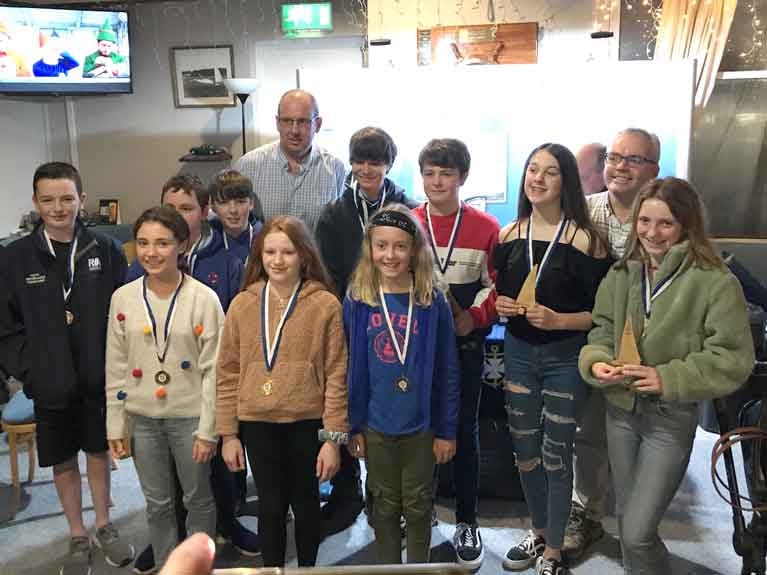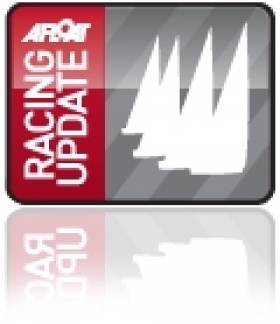Displaying items by tag: icebreaker series
Less than 24 hours after posting that the Icebreaker event run by Ballyholme Yacht Club on Belfast Lough, could take place on the scheduled date (tomorrow Sunday 18th), the club has had to cancel racing. Rear Commodore Rob Milligan informed members of the club's decision. "Unfortunately, as a result of the regulations published late last night, we have no alternative but to cancel racing tomorrow, Sunday 18th. RYA NI are meeting with the Minister for Communities and SportNI next week to discuss this turnaround in restrictions and we will keep members updated. In the meantime, the boat parks and slipways remain open and we would ask that when using the club, you continue to adhere to the guidelines".
The NI Assembly has published the Regulations that apply with IMMEDIATE effect over the 'Active Period' from 16th October. Key areas of note relating to boating activity are set out on Facebook by RYANI. They say that the implications for boating are that activity where gathering numbers can exceed 15 people – this applies both to training and racing/ competition, can no longer be allowed. A risk assessment in place no longer allows this number to be exceeded.
The Icebreaker usually attracts at least 50 participants.
The post continues " Our current understanding through communications received from the Minister of Communities means that our Participant Guidance for Sailing and Racing in Mixed Households is not currently applicable. Any such activity must ensure participants keep a distance of 2 metres as well as ensuring public health sanitising guidelines are adhered to." It continues " We are due to meet the Minister for Communities on Monday, with a subsequent meeting with Sport Northern Ireland next Thursday. We hope these will provide more clarity of restrictions over the 'active period' and we will share these as soon as possible with the boating community going forward. This has been shared with relevant clubs and centres".
Olympian McGovern Can't Stop Chris Boyd in Ballyholme Icebreaker
Olympian Matt McGovern returned for the final race of part one of the Icebreaker Series on Belfast Lough and showed enough class and speed in the very light winds to show the rest of the Laser fleet the way home. Nearly 40 Lasers fought hard to get away at a compressed start line made worse by a right-hand bias. A black flag on the second attempted start kept them back enough but the wind dropped almost immediately to less than 5 knots.
Series leader Chris Boyd showed his light wind prowess to get a third place and the overall win. Conor Simms tried to make it back through the fleet but finished second overall with Johnathan Henry third. Cavan Fyans had an even better race with a third-place which propelled him to Silver fleet winner in his first series since coming back after children and a PhD. Alex Ward also showed unknown light wind skills to take the Bronze fleet overall prize.
Ollie Haig has a great start in the Laser Radials but was unable to keep Joni Rock and Ellen Barbour behind him. Jess Winton had already won the Laser Radial fleet overall. Special note must go to Sara Sofia Odiso who was sailing her final race at Ballyholme - Sara comes from BYC’s twin club Andora Yacht Club in Italy and has been staying with BYC members for the last 16 weeks but goes home on Boxing Day. She will be missed by the other sailors.
The large dinghy fleet has a mix of boats with RS Aeros’ of varying shapes (including IRO Robin Gray) and sizes, Rs200s, RS400s, 505’s but they have been largely following the Laser 2000 of Dave Fletcher and Ryan Smyth throughout the series. Recent Jacques Fabre sailor Chunky/Michael Gunning with a rare showing from Jeremy Tomalin shot away in their RS400 however followed by Garth Flannigan and Brian Spence who had to retire with equipment failure.
Rob Milligan and Paul Blamphin came second overall in an RS200 with Sandra Halliwell third in an RSAero5.
Richard Swanston and Matt McMurtry were able to break away in their F18 for the win in front of series winners Adrian Allen and Barry Swanston. Special note must go to Pete and Dee McDowell who come second in their Viper before celebrating their Gold Wedding Anniversary today - how many multihull or other crews can claim such a prize.
The Topper fleet was won by Charlie O’Malley with Dan Sheriff and Charlotte Eadie following him home and in similar positions in the series. Ian Moore and his young son Aaron won the small PY class in their Mirror beating the O’Tiarnagh and Harrington teams in their RS Feva’s
The prize-giving was held after racing followed by the infamous Icebreaker dinner which has been held for over 25 years with the usual merriment and a quiz. Over 90 dinghies have raced in this years Icebreaker showing the strength of dinghy racing at Ballyholme. The Laser Radial fleet expect even greater numbers in Part 2 in preparation for the Youth European Championships in July 2020 - the second series starts again on the first Sunday in February. Many thanks were given to Charles Hurst Jaguar Landrover who have sponsored the event for the first time as well as all the volunteers that help to make the series run - on and off their water.
100 Dinghies For Ballyholme Yacht Club's Icebreaker Series
Ballyholme Yacht Club is looking froward to the first race of the Lisglass Builder's Icebreaker Series. The dinghy series is the largest in Northern Ireland, if not Ireland running from Sunday 4th October through to Sunday 3rd April with 21 races. The Series is split into two parts, Part 1 running from October to December and Part 2 running from 31st January to April.
There will be windward starts from a committee boat as in previous years using the club racing courses. In recent years, they have had over 100 boats entered. Ballyholme YC are looking to increase numbers from last year with the growing Topper fleet, RS double handed fleet and the biggest Laser fleet in Ireland.
Last week, many of Ballyholme's top dinghy youth sailors were competing at the RYANI Youth Championships with many achieving prizes. Of note, Liam Glynn won the top RYANI Laser Radial while there were also successes in the Topper Age ranges and the Topper Regatta fleets. With the Topper World Championships at Ballyholme in 2016, we hope that many of the leading NI Toppers will come to race during the Lisglass Builder's Icebreaker series.
Ballyholme YC is very thankful to our sponsor’s Lisglass Builders: Lisglass Builders Ltd are among the best-established building companies in Northern Ireland. They specialise in building & refurbishing both traditional and modern homes throughout the province which require close consultation with the client and a tailored approach to the high-end building and design techniques which they are proud to offer. Through flexibility and conscientiousness, and in contrast to many other building companies, they are able to bring the client’s vision to life and to ensure that all goals are met and expectations fulfilled. The company is led by Paul Fekkes, a member of Ballyholme YC and a well know name across the Irish sailing scene. We look forward to seeing him afloat again this year.
There are a number of new adult and cadet sailors and coaching is available in September and October on Saturdays to bring them up to speed (see Training calendar for more details). Entrants should use the On-line entry system to register – there is a £5.00 discount for doing so compared to paper. If you are interested in helping out with either rescue or battery, please contact Ruth Mullan.
The RYANI Laser squad will also be visiting Ballyholme YC this weekend so it looks to be another very busy one.
Ballyholme's Ice Breaker Attracts 49 Boat Laser Fleet
#ballyholme – Northern Ireland's largest open dinghy series began on Belfast Lough today with 49 Lasers competing in Ballyhome's Icebreaker series. Gareth Flannigan was the winner of today's first race with Hammy Baker second and Chris Boyd third in the standard class. Tim Brow was the radial winner and James Moore won the 4.7 fleet.
The series runs though to Sunday 30th March with 22 races. This year an F18 Multihull fleet are gearing up for the F18 worlds at Ballyholme YC in June 2014. Adrian Allen won the first race. The results are here.


























































